PROTECT YOUR DNA WITH QUANTUM TECHNOLOGY
Orgo-Life the new way to the future Advertising by AdpathwayGrowing impressive and massive pumpkins requires attention to several elements of care, perhaps none more critical than proper watering. These sprawling vines, with large leaves and heavy fruits, need plenty of moisture to thrive.
Consistent watering at the right times is essential for healthy growth as it is for any crop, preventing common problems that may ruin your harvest before you get a taste.
Understanding when and how to water pumpkin plants can make the difference between an abundant harvest and no harvest at all. By adjusting your watering routine to match the plant’s growth stages and implementing efficient watering methods, you can maximize your pumpkin production while minimizing water waste and disease issues.
Sugar Pie Pumpkin

Galeux d’Eysines Pumpkin

Galeux d’Eysines Pumpkin Seeds

Pumpkin Watering Needs
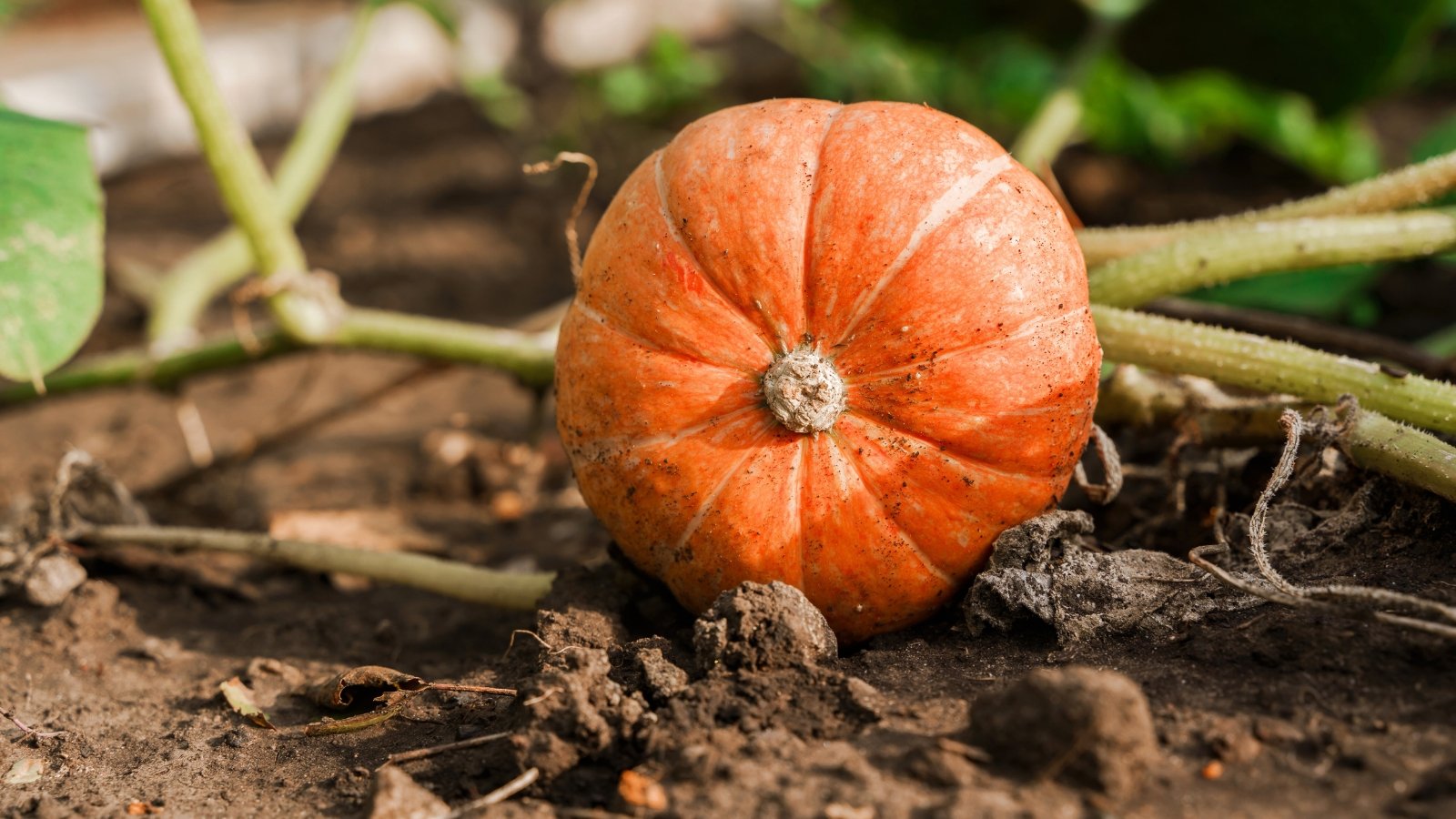 Daily watering might be needed when the sun beats down.
Daily watering might be needed when the sun beats down.Pumpkin plants have extensive but shallow root systems and large leaf surfaces that lose water quickly, especially during hot weather. The broad leaves may look robust, but they wilt readily when moisture is insufficient. This combination makes pumpkins relatively high-demand plants when it comes to watering.
As the vines spread across the garden, they develop roots at stem nodes that contact the soil, allowing the plant to absorb water from a wider area. However, this expansive growth also means that water must reach a larger soil volume as the season progresses.
Soil quality plays a significant role in meeting pumpkin water requirements. Well-draining soil amended with organic matter (like compost) provides the ideal balance of moisture retention and aeration. Heavy clay soils hold too much water around roots, while sandy soils drain too quickly.
Weather conditions also dramatically affect how often pumpkins need watering. During periods of high heat and low humidity, plants may require daily watering, while cooler, cloudier days reduce water needs. Monitoring both the forecast and soil moisture helps determine the right watering schedule for current conditions rather than following a strict calendar, possibly leading to issues with over or underwatering.
When to Water a Pumpkin
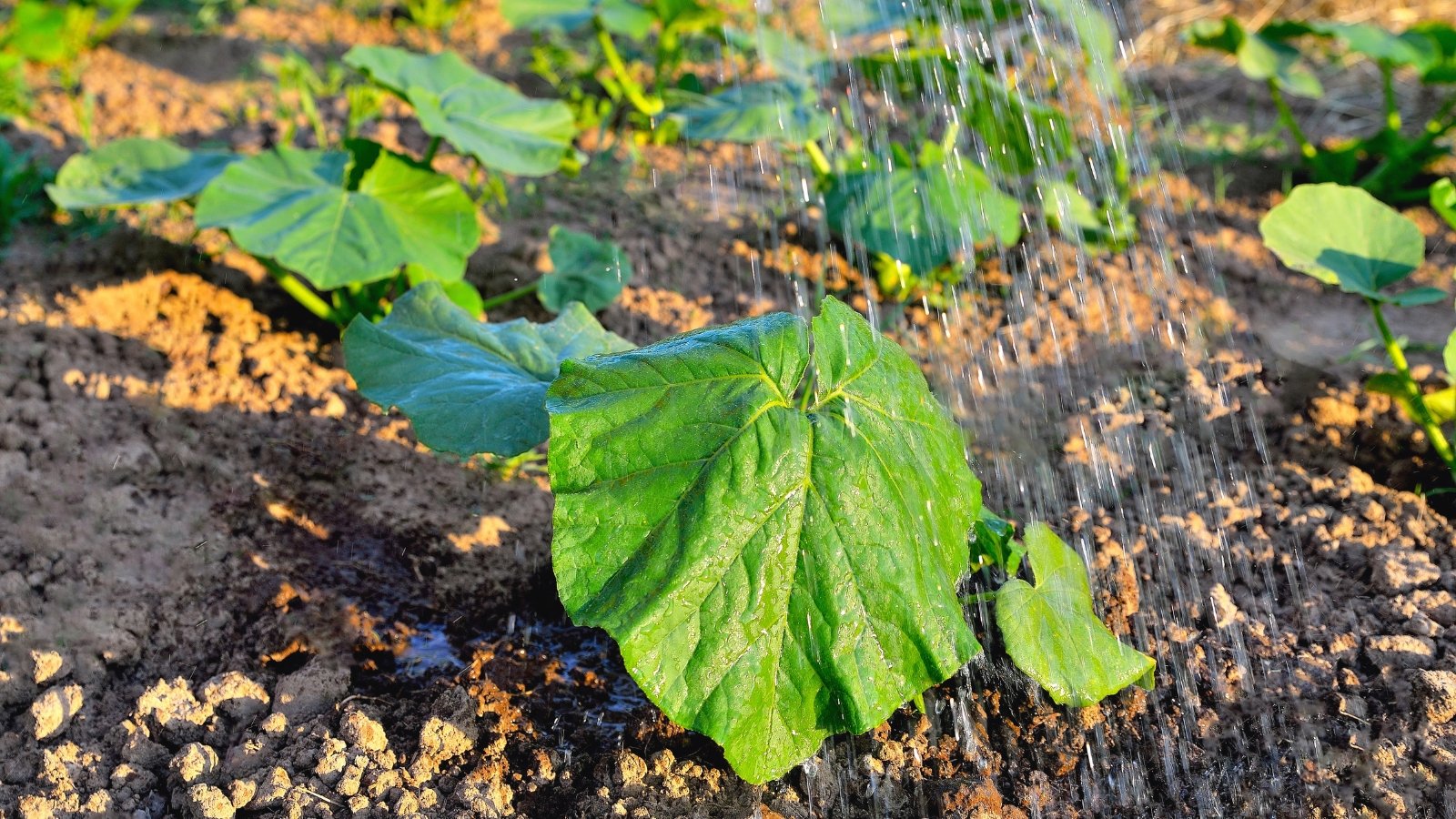 Early-day watering beats late afternoon for healthy, strong plants.
Early-day watering beats late afternoon for healthy, strong plants.When it comes to timing, morning watering is generally best, not just for pumpkins but all crops. It allows foliage to dry before the evening, reducing disease risk, and limits evaporation loss. Avoid late afternoon or evening watering when possible, as prolonged leaf wetness overnight creates ideal conditions for fungal diseases to develop.
Consistency in watering matters as much as timing, if not more. Pumpkin plants subjected to inconsistent moisture often develop stressed root systems and poor fruit. Water stress, especially during critical growth periods, can cause flowers to drop without setting fruit or lead to misshapen pumpkins.
The timing depends on the growing stage of your plants, from planting to fruit set.
After Planting
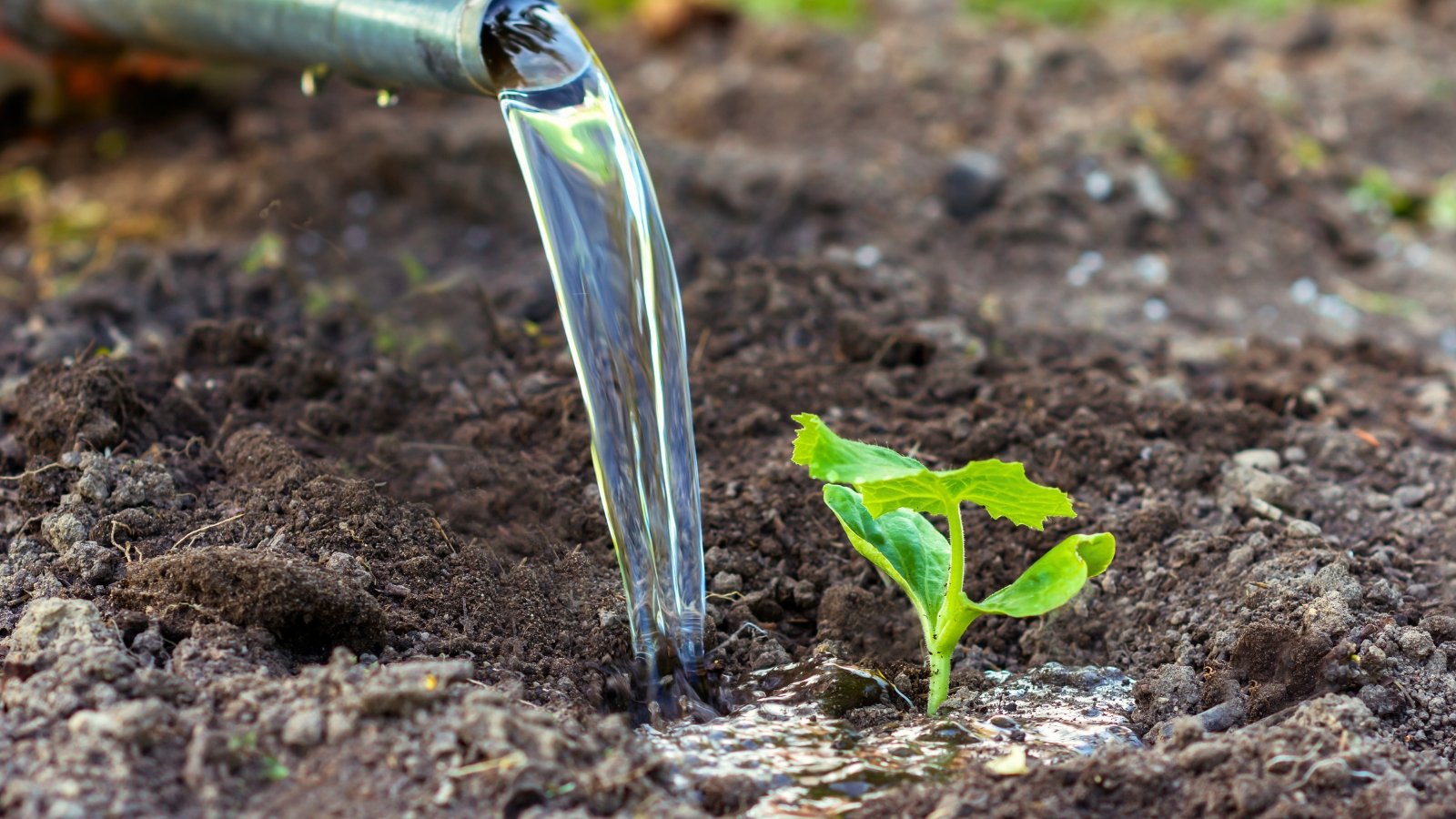 New seedlings need steady moisture but not too much.
New seedlings need steady moisture but not too much.As soon as they go into the ground, newly planted pumpkin seeds require consistent moisture to germinate properly. This typically takes 5-10 days (depending on soil temperature). Watering gently rather than using a forceful stream is best to avoid seed displacement.
Once seedlings emerge, continue watering while being careful not to overwater (in other words, make the soil soggy). Young plants with limited root systems are particularly vulnerable to watering issues. Water thoroughly but less frequently than during germination, allowing the top inch of soil to dry slightly between waterings.
Monitor your seedlings daily during their first weeks, as their small root systems and limited leaf area make them especially sensitive to moisture fluctuations. The goal during this phase is to prevent wilting while avoiding the soggy conditions that lead to damping off, a common fungal disease that causes seedlings to collapse at the soil line.
Early Growth
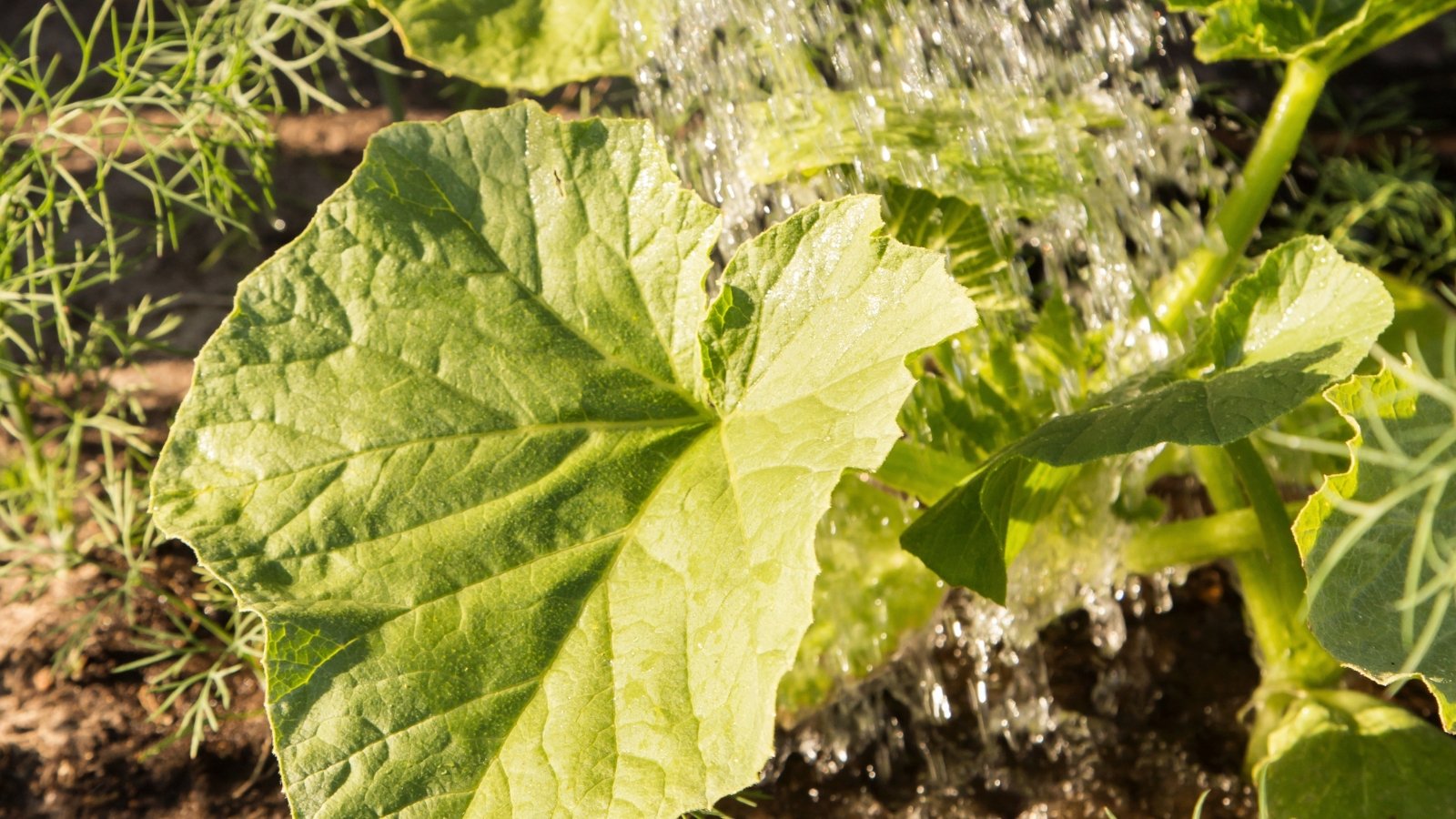 Shallow roots appreciate a deep soak now and then.
Shallow roots appreciate a deep soak now and then.As pumpkin plants enter their vegetative growth stage, their water needs increase. The rapid development of vines and leaves requires consistent moisture to support cell expansion and photosynthesis. During this period, pumpkins typically need watering every 2-3 days in average weather conditions, with more frequent watering during hot or windy periods.
Deep, thorough watering encourages already-shallow roots to grow downward rather than remaining near the surface where they’re vulnerable to heat and drought. Apply water slowly enough to allow deep penetration rather than running off the soil surface.
This stage is also ideal for mulching around plants to conserve soil moisture. A layer of organic mulch a few inches thick helps maintain consistent soil moisture, suppress weeds that compete for water, and prevent soil splash that can spread diseases to lower leaves.
Fruiting
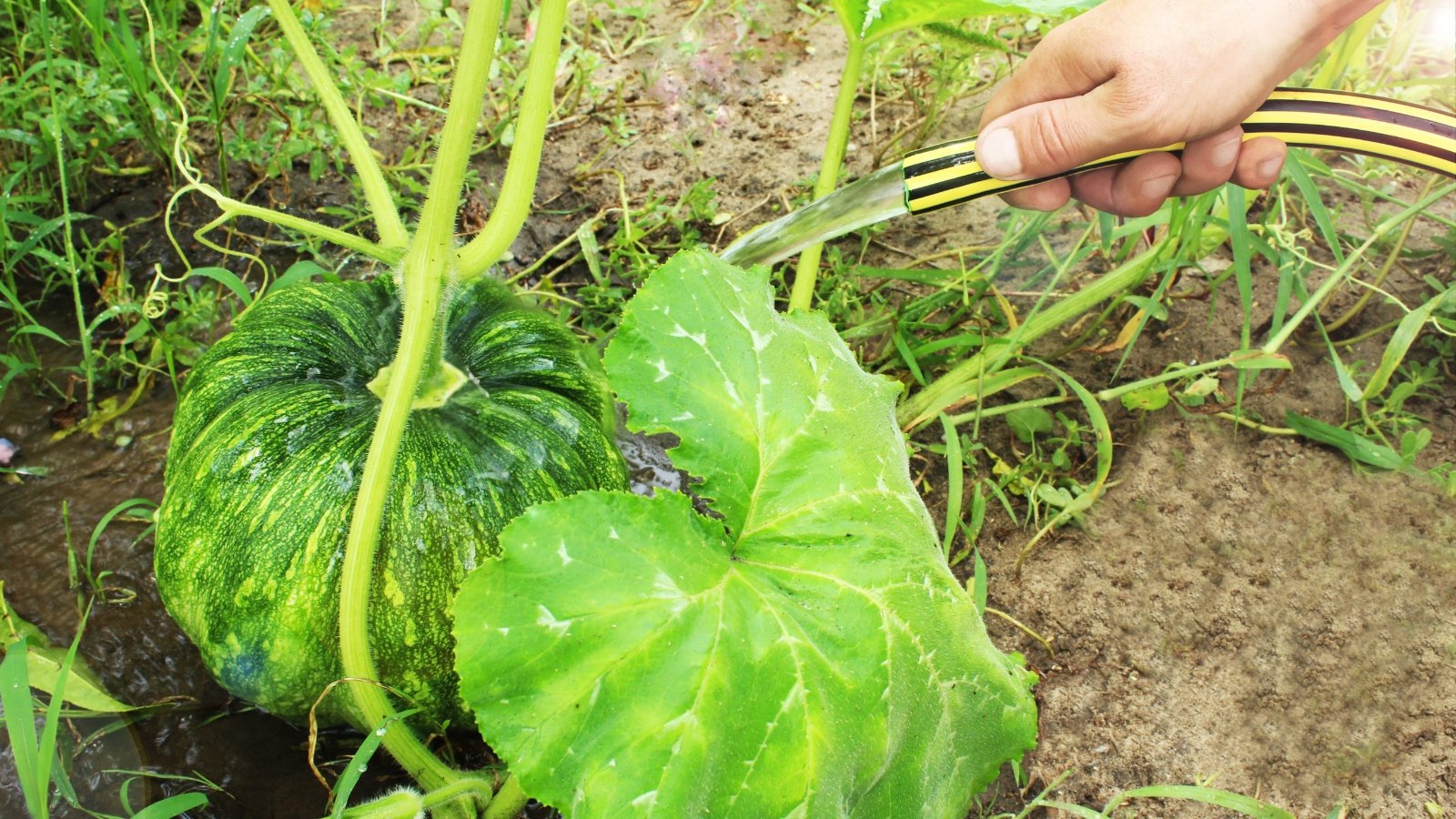 The biggest fruits show up when watering habits stay steady.
The biggest fruits show up when watering habits stay steady.The fruiting period is the most critical watering stage for pumpkin plants, especially if you’re after massive prize-winning pumpkins. According to the University of Connecticut, consistent watering at this time can increase fruit size by 50 – 100%. It also directly influences fruit set and quality. Water stress during this period often leads to issues that can ruin your harvest.
As fruits begin developing, pumpkin plants require approximately two inches of water per week from rainfall or irrigation. This amount may need to increase during periods of extreme heat or if plants are grown in particularly sandy soil. The goal is to maintain even soil moisture without creating waterlogged conditions that promote root rot.
Pay special attention to watering needs when fruits are actively sizing up. During this rapid growth phase, interruptions in water can cause stunted fruit or splitting when water becomes available again.
How Much Water to Use
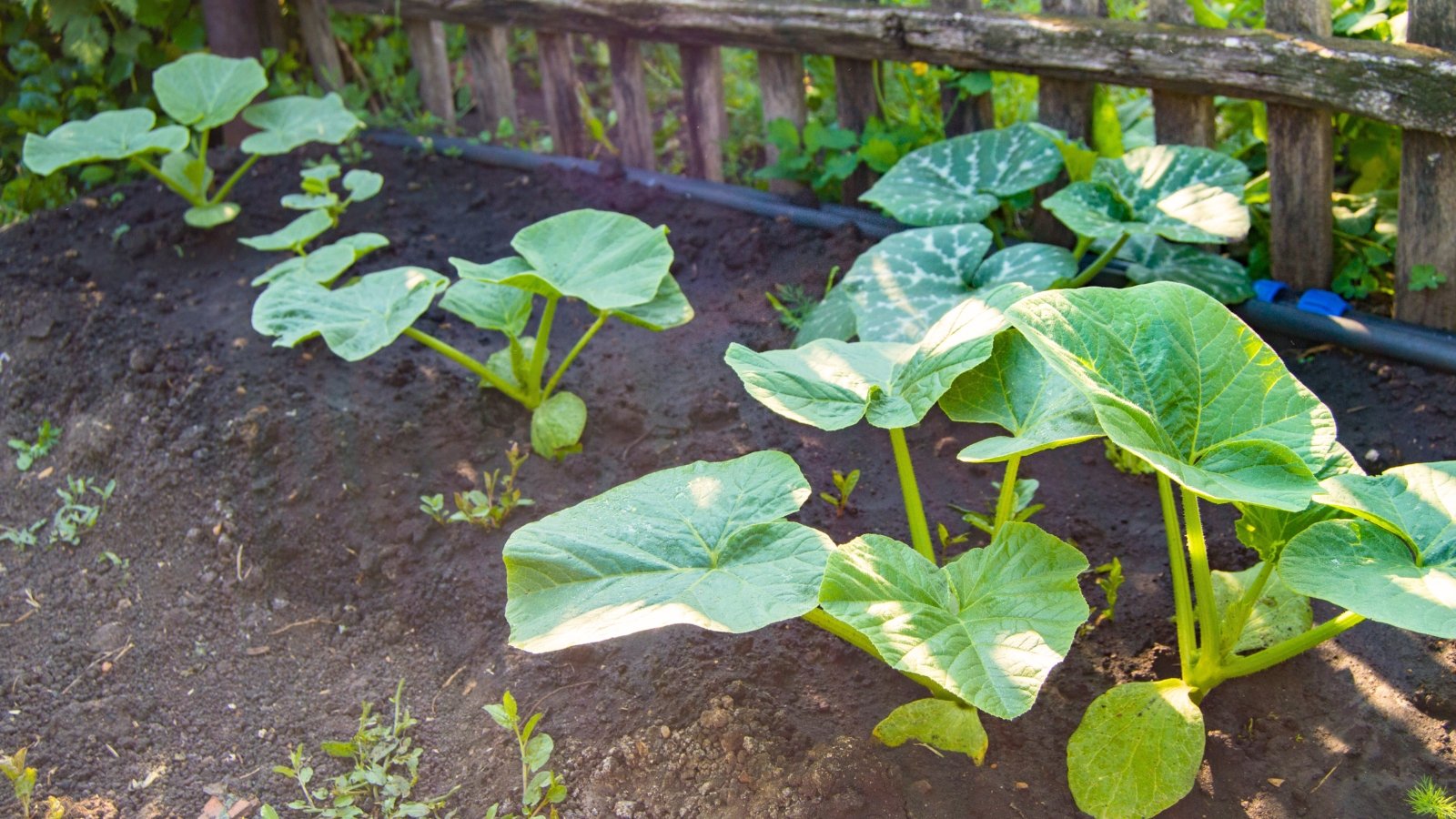 Weather changes and soil type really shape watering needs daily.
Weather changes and soil type really shape watering needs daily.The amount of water for pumpkin plants depends on several factors including soil type, weather conditions, growth stage, and chosen variety. As a general guideline, mature pumpkin plants need approximately two inches of water per week (one inch is the recommended minimum, but not ideal). This amount should be adjusted based on rainfall, temperature, and assessment of the soil.
Monitoring soil moisture is the most reliable method for determining watering needs. If the soil feels dry a couple of inches down, it’s time to water. Also consider using a soil moisture meter to get accurate readings at root level rather than relying on surface appearance.
Signs of underwatering include wilting leaves, yellowing older leaves, and stunted growth. Overwatering symptoms include yellowing leaves throughout the plant, rotting stems near the soil line, and susceptibility to fungal diseases. Look out for these symptoms and adjust your watering as needed.
Watering Methods
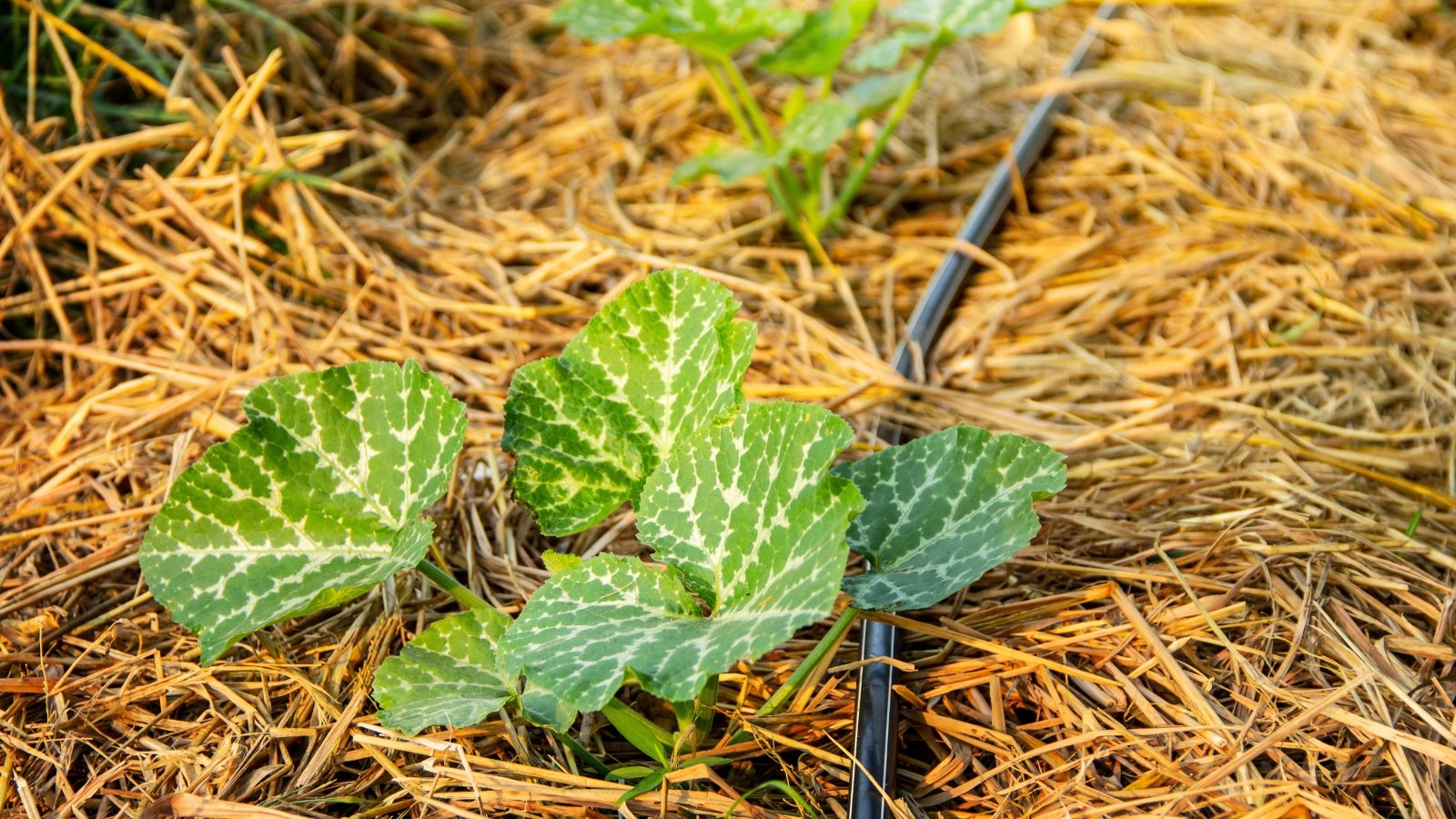 A slow soak at the roots beats a fast sprinkle.
A slow soak at the roots beats a fast sprinkle.Drip irrigation is the preferred watering system for pumpkins (and many other crops), delivering water directly to the soil around plants while keeping foliage dry. This reduces disease risk and delivers moisture where plants need it, minimizing waste from evaporation and runoff.
For gardeners without irrigation systems, hand watering is of course viable if done carefully. Water the soil around plants rather than spraying from above, and use a gentle flow that allows water to soak in rather than running off.
Key Takeaways
It’s up to you to adapt your watering practices to meet the needs of your pumpkins throughout their growth cycle. The most critical periods for moisture management include the weeks after planting and the fruit formation and growth period. Paying special attention to watering during these phases helps prevent the most common moisture-related problems and delivers prize-winning, massive pumpkins at the end of the season.
Consistency is the most important word to remember. Rather than allowing soil to alternate between completely dry and saturated, aim for steady moisture levels that support continuous growth.


 1 month ago
19
1 month ago
19





















 English (US) ·
English (US) ·  French (CA) ·
French (CA) ·